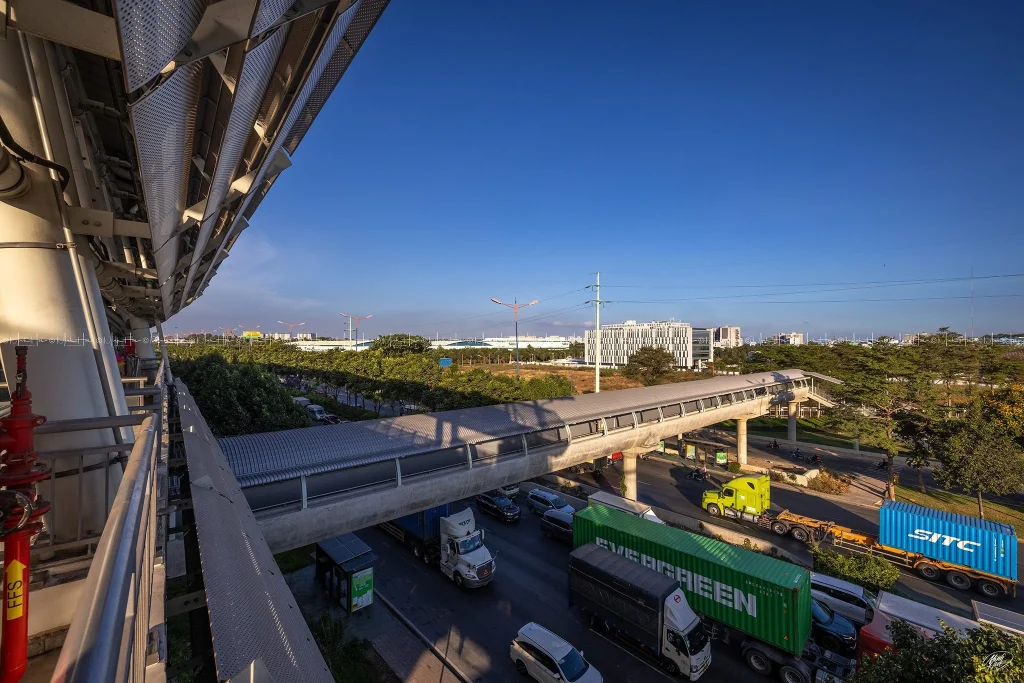NEW MILESTONE FOR HO CHI MINH CITY’S METRO LINE NO. 1
The completion of architectural, mechanical, and electrical work on two crucial pedestrian bridges connecting the Hi-Tech Park and Binh Thai stations is an influential milestone for Metro Line No. 1. These bridges will open in the fourth quarter of this year, coinciding with the inauguration of the metro project, and will demonstrate the smart integration of transit oriented development into Ho Chi Minh City’s urban landscape.
These bridges, announced by the Ho Chi Minh City Urban Railway Management Board (MAUR) on April 29 after nearly five months of construction, are part of a larger network that includes nine pedestrian overpasses. These overpasses provide for seamless connectivity between the elevated stations along the Ben Thanh-Suoi Tien route, which is Ho Chi Minh City’s first journey into electric train service. This proactive inclusion of pedestrian infrastructure in the metro project’s budget demonstrates a clear understanding of how such features improve urban mobility and real estate value.

They are designed to blend in with the look of the elevated metro stations, with strong steel domes and heat-resistant covering, and are supplemented by landscaped areas with flower beds and trees, fostering an environmentally pleasant transit experience. This architectural detail not only improves the user experience, but it also acts as an important safety component, acting as emergency exits.
MAUR also gave information on the remaining pedestrian bridges. The structural elements of bridges at Rach Chiec, Phuoc Long, and Tan Cang stations are already in place, with the remaining construction features expected to be completed by May. Efforts to speed the completion of the bridges at Thao Dien, An Phu, Thu Duc, and National University stations are ongoing, with targeted deployments of personnel and resources reflecting a strategic approach to ensure these infrastructures are operational in accordance with Metro Line No. 1’s timeline.

The project is now 98% complete, with the final steps being system safety evaluations, fire prevention certification, operational staff training, and pedestrian bridge building. This project’s thorough planning and execution demonstrate a comprehensive knowledge of urban transit’s role in real estate development, with momentous returns on investment due to improved urban connectedness and property value appreciation.
The Southeast region is a cornerstone of national socio-economic growth, driven by its role as the primary economic, industrial, and logistics hub. Anchored by Ho Chi Minh City along with Binh Duong, Dong Nai, and Ba Ria – Vung Tau, it boasts remarkable infrastructure including major seaports, Tan Son Nhat International Airport and the under-construction Long Thanh International Airports. These assets are pivotal in connecting the region with both national and international markets.

The region benefits from an extensive and synchronized transportation network, including key arterial routes such as Truong Chinh, Hanoi Highway, National Highway 13, and Nguyen Van Linh Street. This network facilitates seamless connectivity across the pivotal directions, East-West and North-South, fueling socio-economic expansion along these corridors.


